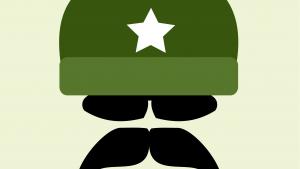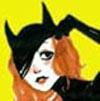
Problems of the Black Death
Almost everyone knows of Blackburne's quick assimilation of chess, of his simultaneous exhibitions and of his blindfold skill, but less well known is his talent at both problem solving and problem creating. ...

Almost everyone knows of Blackburne's quick assimilation of chess, of his simultaneous exhibitions and of his blindfold skill, but less well known is his talent at both problem solving and problem creating. ...

A long, long time ago. . . in September of 1706 in Amsterdam to be exact, a man named Mr. Caze dated his manuscript on chess, "Instruction pour ce livre d'échecs : contenant les diverses manieres ...

I had a brief, though quite interesting, exchange with a gentleman not long ago. It started with a query concerning Louisa Matilda Ballard Fagan, the Italian born English chess player who scored 2nd in the Ladies' I...

I had stumbled across the archived "New York Times" obituary notice for Edmar Mednis (February 22, 2002, by Dylan Loeb McClain). The obit, of course, reviews his life, but pivots on the point that, alth...

Why study traps? There are several good reasons why studying traps might be considered important. First, of course, to avoid becoming a victim of one. Second is to recognize when the opportunity of gaining a quick victory appears. But the ...

Despite the War, the 1940s were an exciting time in American chess, especially in New York. The USCF, newly formed, still seemed vibrant and "Chess Review," Horowitz' somewhat self-serving periodical, reflected the vivaciousness of th...

How to Mate Your Opponent "Winning Chess" by Irving Chernev and Fred Reinfeld gave the following three quotes that inspired this presentation: As soon as a true thought has entered our mind, it gives a light which makes us see a crowd of ot...

Manhattan, early '60s -- a place and a time. One of the few sources of insight into this particular chess scene comes to us through the pages of the March-April, 1964 issue of Frank Brady's mar...

Mary Weiser Bain always seemed to have gotten lost in the shadows of Mona May Karff and Gisela Gresser. But this pioneer of women's chess in the United States played no less a role. While Gresser was home-grown, Mary Bain was born in Hung...

One of the most interesting continual threads in the chess.com forums is called "Post Your Own Miniatures Here." Many very good players post their less-than-thirty-moves games showing off their skill, and sometimes brilliance, in punishing we...

American women had been playing chess long before establishment of the USCF in the late 1930s. In fact, as early as the mid 1890s, an officially conducted match was played between two highly considered lady chess players to determine the be...

The Vieux Carré or French Quarter, cradled in the crescent of the Mississippi River, was the original site of La Nouvelle-Orléans. Although during the 19th century New Orleans expanded and become more Americanized eroding the influe...

As many fans of Paul Morphy know, there have been some historical fiction written about him. On my Morphy website I host two short stories about Morphy: "The Best American Chess Player" by Dan Heisman and"The Day Kasparov Played Morphy" ...

Chess has had some difficulty throughout the years in presenting itself as a form of public entertainment. There has been some isolated cases where chess made good TV and even a few instances where chess was limelighted and managed to captiv...

As can be seen in the introduction, this article from Schach-Jahrbuch in 1891 endeavored to amass data on the interplay among 32 leading players from the second half of the 19th century. It apparently includes only what the author deemed as...

In his 1968 book called "The Poor Knight" ("Рыцарь бедный"). Vasily Panov described 23 year old Mikhail Tschigorin walking down Nevsky Prospect, a busy thoroughfare in St. Petersburg, with his friend Fedor discussing chess, a game Mikhail f...

Recently, IM Jeremy Silman contributed an article featuring the talent of Ignatz Kolisch, one of the strongest, if not the strongest, player during the 1860s. Mr. Silman's article, Kolisch: Unknown Tactical Monster, demonstrated Kolis...

Paul Morphy 1870 Morphy in his time was known for, among other things, his blindfold play, a skill he developed purposefully and gradually. Almost all chess players know of his famous blindf...

There are certain rare actions in chess that elicit an almost emotional response - windmills, smothered mates, advantageous underpromotions and what I want to include here: Checkmate by Castling. &nb...

S T A L E M A T E _______________________________________________________ The existing rule has this in its favour, that it appeals strongly to the sporting instincts of mankind; and the last chance which it affords to a player who appear...

Paul Morphy, Spring Hill College, 1854 This is a highly unusual article for me. I have no love for chess engines. Additionally, I have severe reservations about trying to compare modern players with 19th cenutry players. It has alwa...

Scrapbook Prologue: The U.S. Open chess tournament has been around since 1900 when it was called the Western Chess Association Championship and first won by Louis Uedemann, the creator of the Uedemann Code which ...

If you look on Wikipedia, or for that matter on almost any website that mentions it, including the official USCF website and the site of the US Chess Trust, You will notice that all these places honor Adele Ri...

February 10 commemorated the 150th birthday of Max Harmonist. I first came across Harmonist in I.A. Horowitz's book, "The Golden Treasury of Chess" and was entralled by the included game: Max Harmonist2-10-1864 -...